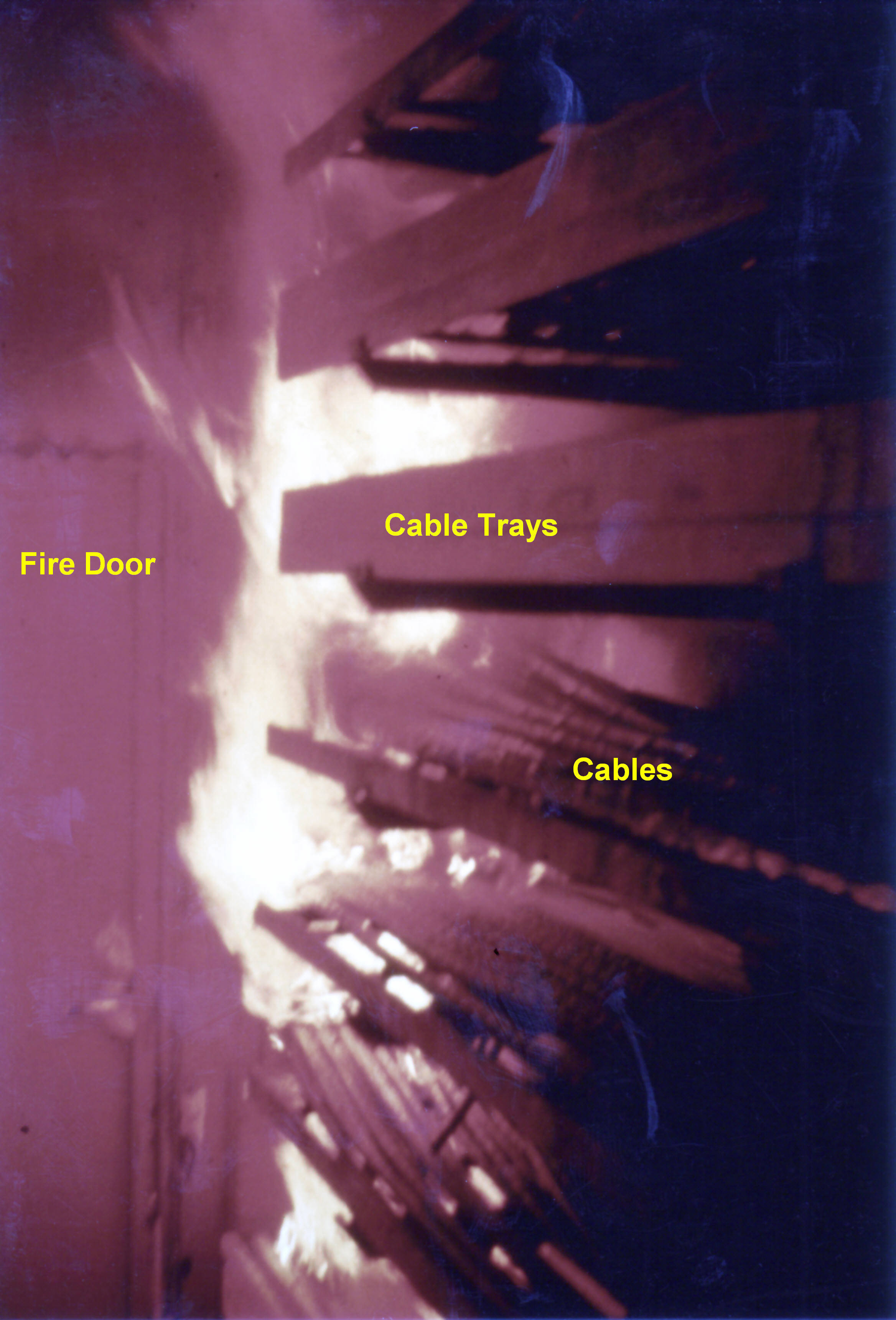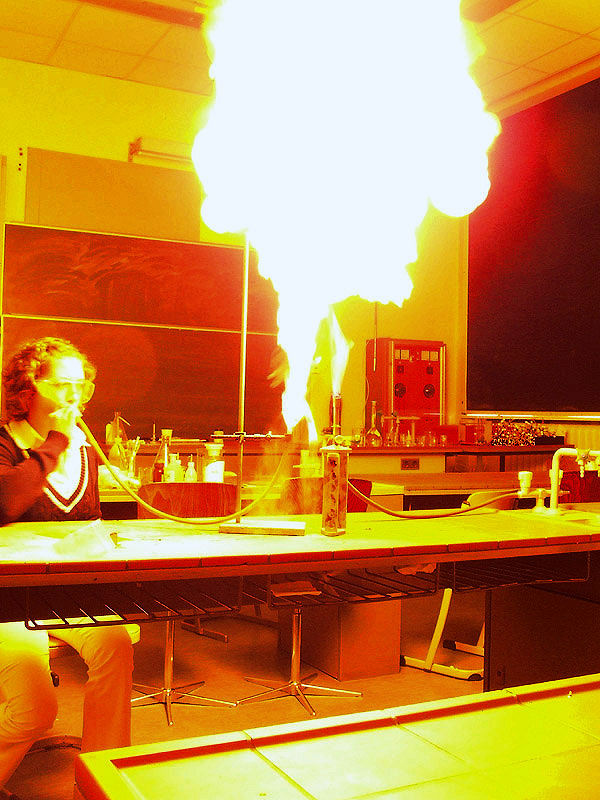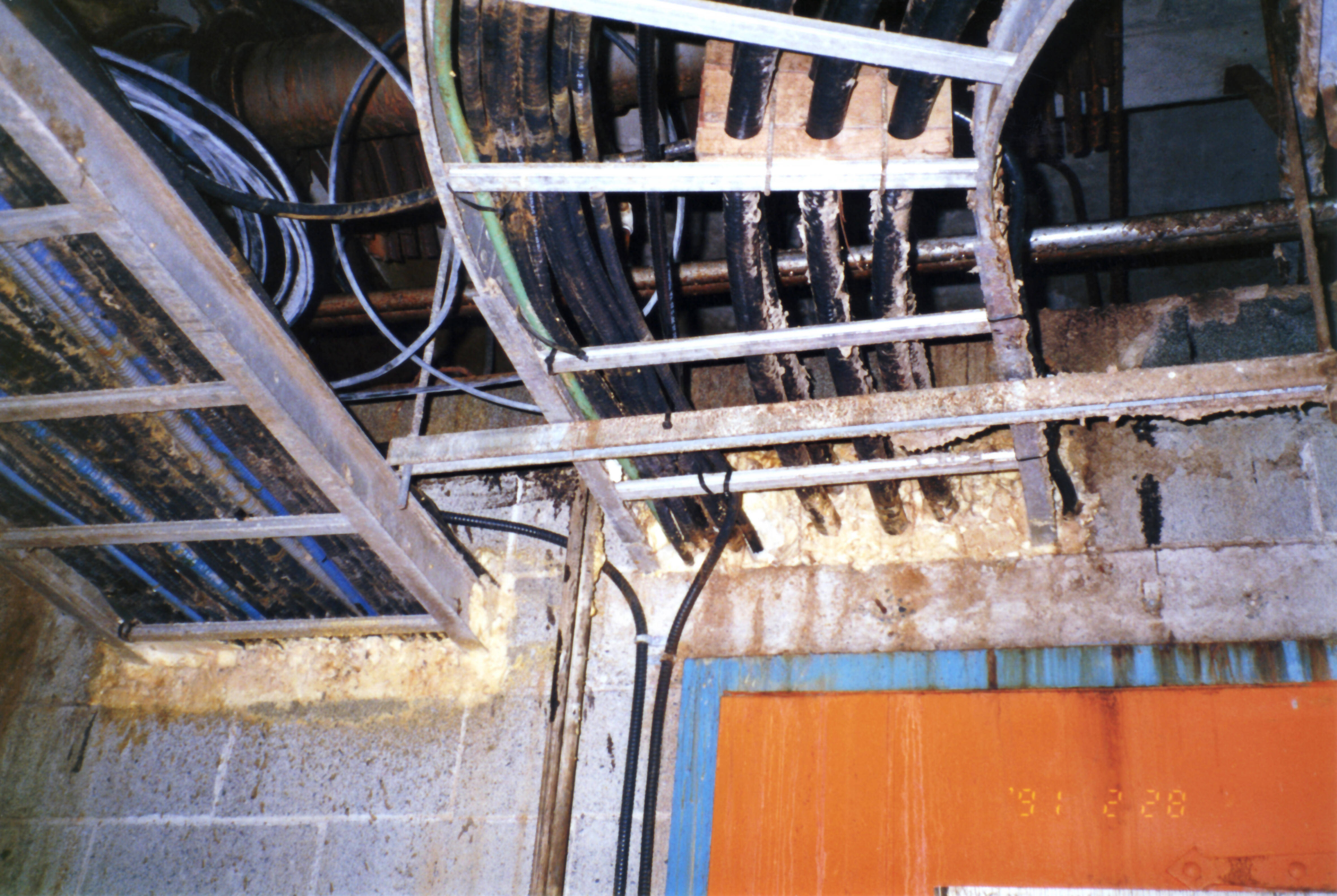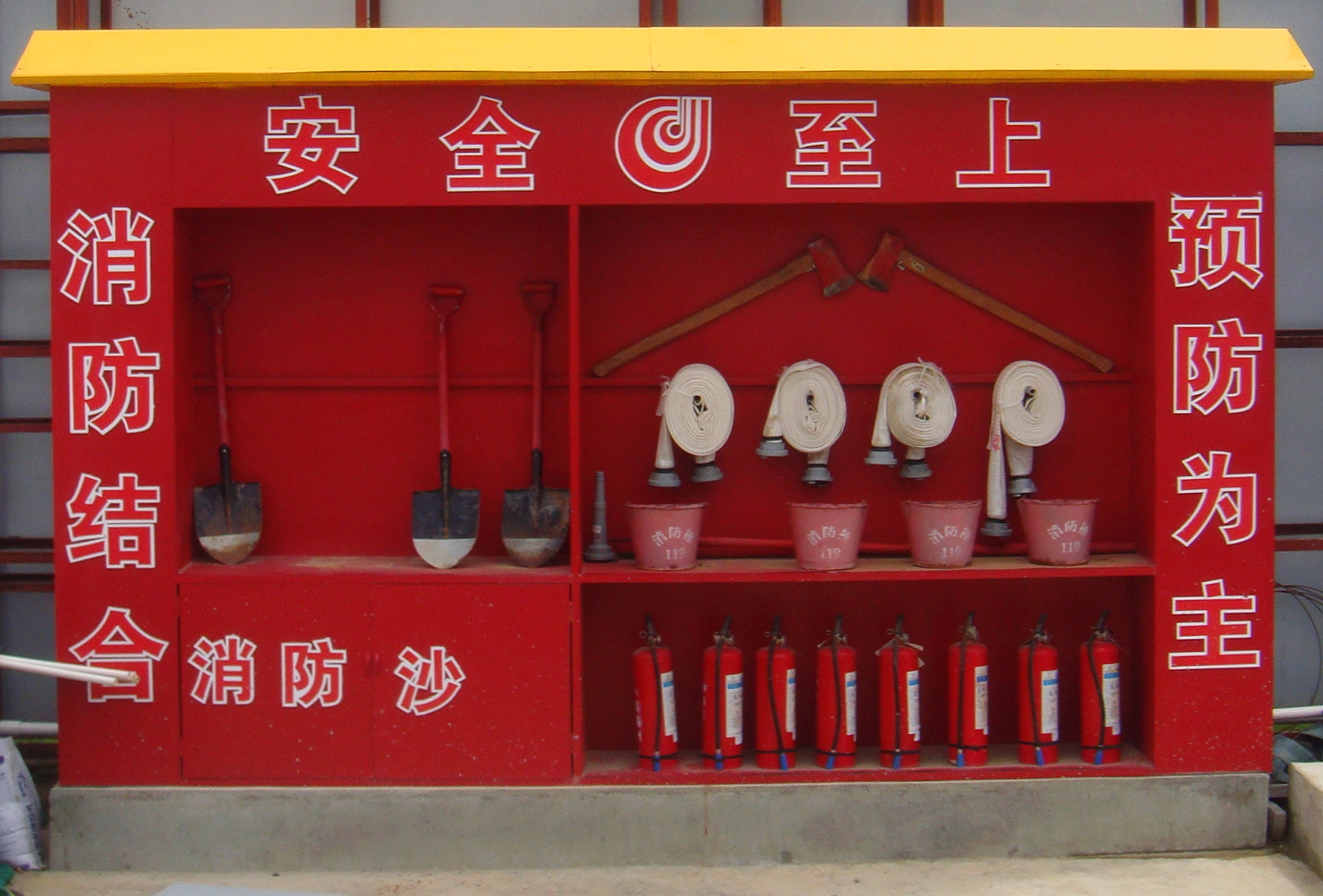|
Flammability
A combustible material is a material that can burn (i.e., sustain a flame) in air under certain conditions. A material is flammable if it ignites easily at ambient temperatures. In other words, a combustible material ignites with some effort and a flammable material catches fire immediately on exposure to flame. The degree of flammability in air depends largely upon the volatility of the material this is related to its composition-specific vapour pressure, which is temperature dependent. The quantity of vapour produced can be enhanced by increasing the surface area of the material forming a mist or dust. Take wood as an example. Finely divided wood dust can undergo explosive flames and produce a blast wave. A piece of paper (made from pulp) catches on fire quite easily. A heavy oak desk is much harder to ignite, even though the wood fibre is the same in all three materials. Common sense (and indeed scientific consensus until the mid-1700s) would seem to suggest that materi ... [...More Info...] [...Related Items...] OR: [Wikipedia] [Google] [Baidu] |
Flash Point
The flash point of a material is the "lowest liquid temperature at which, under certain standardized conditions, a liquid gives off vapours in a quantity such as to be capable of forming an ignitable vapour/air mixture". The flash point is sometimes confused with the autoignition temperature, the temperature that causes spontaneous ignition. The fire point is the lowest temperature at which the vapors keep burning after the ignition source is removed. It is higher than the flash point, because at the flash point vapor may not be produced fast enough to sustain combustion. Neither flash point nor fire point depends directly on the ignition source temperature, but ignition source temperature is far higher than either the flash or fire point, and can increase the temperature of fuel above the usual ambient temperature to facilitate ignition. Fuels The flash point is a descriptive characteristic that is used to distinguish between flammable fuels, such as petrol (also known as g ... [...More Info...] [...Related Items...] OR: [Wikipedia] [Google] [Baidu] |
Fire Test
A fire test is a means of determining whether fire protection products meet minimum performance criteria as set out in a building code or other applicable legislation. Successful tests in laboratories holding national accreditation for testing and certification result in the issuance of a certification listing. Components and systems subject to certification fire testing include fire rated walls and floors, closures within them such as windows, fire doors, fire dampers, structural steel, and fire stops. Fire tests are conducted both on active fire protection and on passive fire protection items. There are full-scale, small-scale and bench-scale tests. Fire testing considers all applicable provisions of the product certification. Examples of fire testing for products and systems * ASTM E84 Standard Test Method for Surface Burning Characteristics of Building Materials, also known as the Steiner tunnel test * ASTM E1354 Standard Test Method for Heat and Visible Smoke Release Rat ... [...More Info...] [...Related Items...] OR: [Wikipedia] [Google] [Baidu] |
Flash Point
The flash point of a material is the "lowest liquid temperature at which, under certain standardized conditions, a liquid gives off vapours in a quantity such as to be capable of forming an ignitable vapour/air mixture". The flash point is sometimes confused with the autoignition temperature, the temperature that causes spontaneous ignition. The fire point is the lowest temperature at which the vapors keep burning after the ignition source is removed. It is higher than the flash point, because at the flash point vapor may not be produced fast enough to sustain combustion. Neither flash point nor fire point depends directly on the ignition source temperature, but ignition source temperature is far higher than either the flash or fire point, and can increase the temperature of fuel above the usual ambient temperature to facilitate ignition. Fuels The flash point is a descriptive characteristic that is used to distinguish between flammable fuels, such as petrol (also known as g ... [...More Info...] [...Related Items...] OR: [Wikipedia] [Google] [Baidu] |
Dust Explosion
A dust explosion is the rapid combustion of fine particles suspended in the air within an enclosed location. Dust explosions can occur where any dispersed powdered combustible material is present in high-enough concentrations in the atmosphere or other oxidizing gaseous medium, such as pure oxygen. In cases when fuel plays the role of a combustible material, the explosion is known as a fuel-air explosion. Dust explosions are a frequent hazard in coal mines, grain elevators and silos, and other industrial environments. They are also commonly used by special effects artists, filmmakers, and pyrotechnicians, given their spectacular appearance and ability to be safely contained under certain carefully controlled conditions. Thermobaric weapons exploit this principle by rapidly saturating an area with an easily combustible material and then igniting it to produce explosive force. These weapons are the most powerful non-nuclear explosives in existence. Terminology If rapid c ... [...More Info...] [...Related Items...] OR: [Wikipedia] [Google] [Baidu] |
Building Code
A building code (also building control or building regulations) is a set of rules that specify the standards for construction objects such as buildings and non-building structures. Buildings must conform to the code to obtain planning permission, usually from a local council. The main purpose of building codes is to protect public health, safety and general welfare as they relate to the construction and occupancy of buildings and for example, the building codes in many countries require engineers to consider the effects of soil liquefaction in the design of new buildings. The building code becomes law of a particular jurisdiction when formally enacted by the appropriate governmental or private authority. Building codes are generally intended to be applied by architects, engineers, interior designers, constructors and regulators but are also used for various purposes by safety inspectors, environmental scientists, real estate developers, subcontractors, manufacturers of b ... [...More Info...] [...Related Items...] OR: [Wikipedia] [Google] [Baidu] |
Flammable Liquid
A flammable liquid is a liquid which can be easily ignited in air at ambient temperatures, i.e. it has a flash point at or below nominal threshold temperatures defined by a number of national and international standards organisations. The Occupational Safety and Health Administration (OSHA) of the United States Department of Labor defines a liquid as flammable if it has a flash point at or below 93 °C/199.4 °F. Prior to bringing regulations in line with the United Nations Globally Harmonized System of Classification and Labeling of Chemicals (GHS) in 2012, OSHA considered flammable liquids to be those with a flash point below 37.8 °C/100 °F. Those with flash points above 37.8 °C/100 °F and below 93.3 °C/200 °F were classified as combustible liquids. Studies show that the actual measure of a liquid's flammability, its flash point, is dependent on the local air pressure, meaning that at higher altitudes where the air pressure is lowe ... [...More Info...] [...Related Items...] OR: [Wikipedia] [Google] [Baidu] |
Surface Area
The surface area (symbol ''A'') of a solid object is a measure of the total area that the surface of the object occupies. The mathematical definition of surface area in the presence of curved surfaces is considerably more involved than the definition of arc length of one-dimensional curves, or of the surface area for polyhedra (i.e., objects with flat polygonal faces), for which the surface area is the sum of the areas of its faces. Smooth surfaces, such as a sphere, are assigned surface area using their representation as parametric surfaces. This definition of surface area is based on methods of infinitesimal calculus and involves partial derivatives and double integration. A general definition of surface area was sought by Henri Lebesgue and Hermann Minkowski at the turn of the twentieth century. Their work led to the development of geometric measure theory, which studies various notions of surface area for irregular objects of any dimension. An important example is ... [...More Info...] [...Related Items...] OR: [Wikipedia] [Google] [Baidu] |
United Nations
The United Nations (UN) is the Earth, global intergovernmental organization established by the signing of the Charter of the United Nations, UN Charter on 26 June 1945 with the stated purpose of maintaining international peace and international security, security, to develop friendly Diplomacy, relations among State (polity), states, to promote international cooperation, and to serve as a centre for harmonizing the actions of states in achieving those goals. The United Nations headquarters is located in New York City, with several other offices located in United Nations Office at Geneva, Geneva, United Nations Office at Nairobi, Nairobi, United Nations Office at Vienna, Vienna, and The Hague. The UN comprises six principal organizations: the United Nations General Assembly, General Assembly, the United Nations Security Council, Security Council, the United Nations Economic and Social Council, Economic and Social Council, the International Court of Justice, the United Nations Se ... [...More Info...] [...Related Items...] OR: [Wikipedia] [Google] [Baidu] |
Globally Harmonized System Of Classification And Labelling Of Chemicals
The Globally Harmonized System of Classification and Labelling of Chemicals (GHS) is an internationally agreed-upon standard managed by the United Nations that was set up to replace the assortment of hazardous material classification and labelling schemes previously used around the world. Core elements of the GHS include standardized hazard testing criteria, universal warning pictograms, and safety data sheets which provide users of dangerous goods relevant information with consistent organization. The system acts as a complement to the UN numbered system of regulated hazardous material transport. Implementation is managed through the UN Secretariat. Although adoption has taken time, as of 2017, the system has been enacted to significant extents in most major countries of the world. This includes the European Union, which has implemented the United Nations' GHS into EU law as the CLP Regulation, and United States Occupational Safety and Health Administration standards. History B ... [...More Info...] [...Related Items...] OR: [Wikipedia] [Google] [Baidu] |
Fire Protection
Fire protection is the study and practice of mitigating the unwanted effects of potentially Conflagration, destructive fires. It involves the study of the behaviour, Compartmentalization (fire protection), compartmentalisation, suppression and investigation of fire and its related emergencies, as well as the research and development, production, testing and application of mitigating systems. In structures, be they land-based, offshore or even ships, owners and operators may be responsible for maintaining their facilities in accordance with a design-basis rooted in law, including local building code, building and fire code, fire codes. Buildings must be maintained in accordance with the current fire code, enforced by fire prevention officers of a local fire department. In the event of fire emergencies, Firefighters, fire investigators, and other fire prevention personnel are called to mitigate, investigate and learn from the Fire damage, damage of a fire. Classifying fires When dec ... [...More Info...] [...Related Items...] OR: [Wikipedia] [Google] [Baidu] |
Building
A building or edifice is an enclosed Structure#Load-bearing, structure with a roof, walls and window, windows, usually standing permanently in one place, such as a house or factory. Buildings come in a variety of sizes, shapes, and functions, and have been adapted throughout history for numerous factors, from building materials available, to weather conditions, land prices, ground conditions, specific uses, monument, prestige, and aesthetic reasons. To better understand the concept, see ''Nonbuilding structure'' for contrast. Buildings serve several societal needs – occupancy, primarily as shelter from weather, security, living space, privacy, to store belongings, and to comfortably live and work. A building as a shelter represents a physical separation of the :Human habitats, human habitat (a place of comfort and safety) from the ''outside'' (a place that may be harsh and harmful at times). buildings have been objects or canvasses of much architecture, artistic expression. ... [...More Info...] [...Related Items...] OR: [Wikipedia] [Google] [Baidu] |
Fire Code
Fire safety is the set of practices intended to reduce destruction caused by fire. Fire safety measures include those that are intended to prevent wikt:ignition, the ignition of an uncontrolled fire and those that are used to limit the spread and impact of a fire. Fire safety measures include those that are planned during the construction of a building or implemented in structures that are already standing and those that are taught or provided to occupants of the building. Threats to fire safety are commonly referred to as fire hazards. A fire hazard may include a situation that increases the likelihood of a fire or may impede fire escape, escape in the event a fire occurs. Fire safety is often a component of building code, building safety. Those who inspect buildings for violations of the Fire Code and go into schools to educate children on fire safety topics are Fire Department members known as ''Fire Prevention Officers''. The Chief Fire Prevention Officer or Chief of Fire ... [...More Info...] [...Related Items...] OR: [Wikipedia] [Google] [Baidu] |









